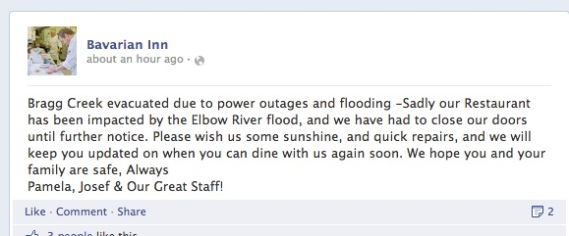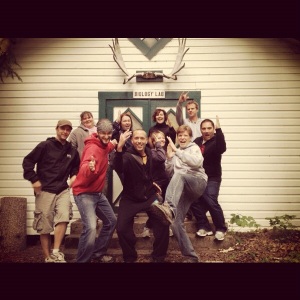
Stampede Park – facing south – June 21 @ 7:30 PM
Today I was to be study day at school. I was supposed wake up with my alarm, shower, and head to work.
Last night I started to watch the news and around 11:30PM the news caster announced that CBE and CCSD school were to be closed Friday. I had to grab my remote and rewind my live TV……did I hear her correctly? I quickly got a text from a colleague and very soon our emergency phone out tree was activated.
Every teacher hopes and prays for that ‘snow’ day…..the one where you get that call, and get to stay all nice and warm in your pyjamas stay in bed and drink coffee. Today was not that day. Sure there was no school, but it wasn’t because of a huge snow fall, its because the City of Calgary declared a local state of emergency.
Last night and early this morning I began tweeting using the schools account to get the message to people to stay home. I wasn’t able post on the website as this can only be done on an internal computer. Our district started posting updates on their twitter and facebook accounts as the situation was changing quickly. Twitter and facebook quickly became the ‘go-to’ places for information as our own servers (e-mail and websites) could be shut down at a moments notice as they are in the downtown core and could be subject to a power outage. One valuable lesson I learned today was how powerful social media is in emergency situations (maybe some thesis and research here???)
The images of the majestic Bow and Elbow rivers overflowing their banks leave you awestruck.
Every 30 minutes on the televsion (something you wouldn’t see outside of Alberta) were the loud beeping interruptions of the Emergency Alert System….you know..the one they would test on American television when we were little. Seeing it for real gave a very somber and serious tone to the message. The alerts hit close to home. Communities outside of Calgary were affected first…then those closest to the water…then some a little higher…then a little more higher ground.
As the alerts came in, I started to see tweets and facebook messages from friends, and businesses that I frequent; posts like this from the Bavarian Inn, one of my most favourite restaurants in the region:

The Bavarian Inn’s facebook update – June 21, 2013
The city is an awkward place to be right now. Looking out on my verandah I see clear blue skies – it seems like any other regular evening (other than its a bit cool). However, there is a uneasiness in the air. Most people are home, but the streets are quiet. You can see military helicopters flying over the city, and I’ve also seen STARS air ambulance flying in from the south (the High River area is seriously affected). Everywhere you go you hear stories – they are heartbreaking….
….people have flooded homes and have no ideas when they can return.
….the minimal items people chose to take with them at a moments notice.
….friends who live only a 15 minute walk away (but down in the valley) being woken up at 12:15AM by police knocking on their door and telling them they had to evacuate.
….ranchers and farmers who had to cut their fences and let their entire herd of horses free so that the animals could use their natural instincts and save themselves.
You also hear great stories of heroism in this fine city.
…..I know several people who work for emergency services – working 14.5 hour shifts to make sure things keep running.
….my dog’s day-care (and training services) have opened their doors 24-7 and taking in pets displaced by the floods.
…..restaurants are donating to the emergency shelters in town. Many of them just say “Tell us what you need, and you have free food”.
The rain has stopped but the river is still overflowing its banks. The next couple of days will be critical. After that, the clean up will begin…..I’m sure that the generosity, courage, and resilience of this city (and province) will shine through….even though losses have been deep.
For those of you who know me personally I am well. I have power, water, gas, and internet. The city (and services) have done an excellent job keeping the flood-free areas up and running. I am safe, high, dry and comfortable.
Below are a few photos I took today. All photos were taken on Friday, June 21st around 7:30 PM.
J.T.

Calgary Stampede grandstand and racetrack.

The Stampede grounds, Saddledome, and DT Calgary.

Just outside the ‘Olympic Way’ gates to Stampede Park.

The ‘Olympic Way’ entry to the Calgary Stampede.

Looking NE following the Elbow river into Inglewood.


















